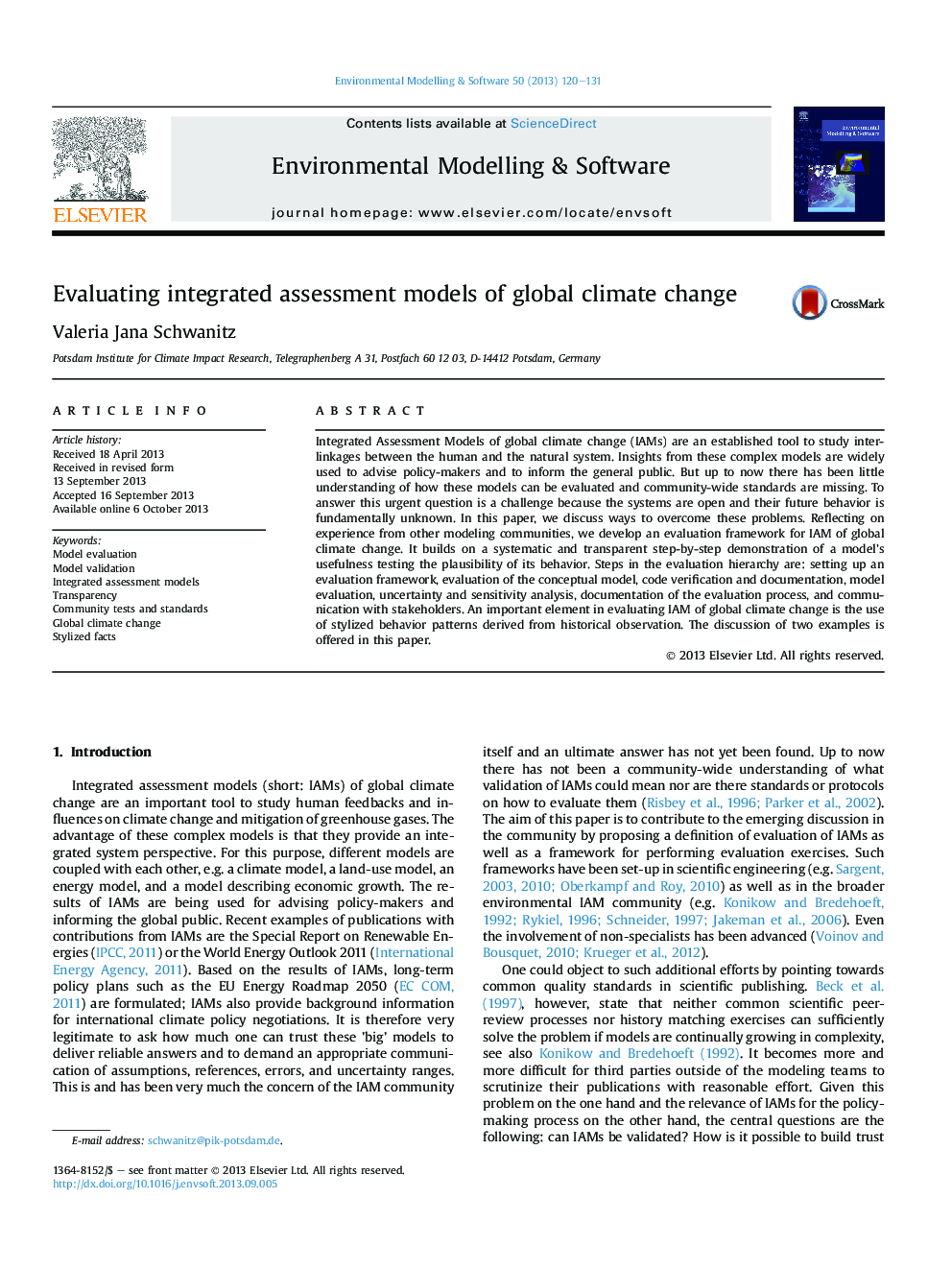| Article ID | Journal | Published Year | Pages | File Type |
|---|---|---|---|---|
| 568910 | Environmental Modelling & Software | 2013 | 12 Pages |
•We propose a definition for evaluating integrated assessment models.•Focussing on evaluating the plausibility of a model's explanatory power is important.•The evaluation process calls for applying a variety of tests to learn about the model's plausibility.•We propose and discuss an evaluation hierarchy for integrated assessment models.•An important element of evaluating integrated assessment models is the confrontation with stylized facts.
Integrated Assessment Models of global climate change (IAMs) are an established tool to study interlinkages between the human and the natural system. Insights from these complex models are widely used to advise policy-makers and to inform the general public. But up to now there has been little understanding of how these models can be evaluated and community-wide standards are missing. To answer this urgent question is a challenge because the systems are open and their future behavior is fundamentally unknown. In this paper, we discuss ways to overcome these problems. Reflecting on experience from other modeling communities, we develop an evaluation framework for IAM of global climate change. It builds on a systematic and transparent step-by-step demonstration of a model's usefulness testing the plausibility of its behavior. Steps in the evaluation hierarchy are: setting up an evaluation framework, evaluation of the conceptual model, code verification and documentation, model evaluation, uncertainty and sensitivity analysis, documentation of the evaluation process, and communication with stakeholders. An important element in evaluating IAM of global climate change is the use of stylized behavior patterns derived from historical observation. The discussion of two examples is offered in this paper.
